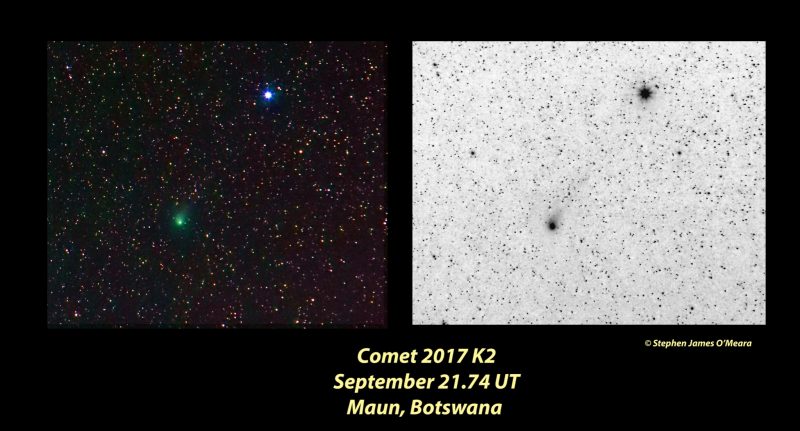
Comet C/2017 K2 (PanSTARRS)
Hey, Southern Hemisphere observers, this one’s for you! Comet C/2017 K2 (PanSTARRS) is making its closest approach to the sun – called perihelion – on December 19, 2022. And you have to be south on the globe to spot it. The comet is currently near the border of the constellation Ara the Altar and heading into Pavo the Peacock. Reports show the comet around magnitude 8.5, which means you’ll want good binoculars and dark skies to see it.
The comet’s close approach to Earth was back on July 14, 2022, in northern skies. But the comet continues to head deeper into southern skies, making this observing target the domain of the 12% of Earth’s population that lives in the Southern Hemisphere.
How to see C/2017 K2
The website The Sky Live will help you spot the comet. You can find star maps there from the viewpoint of your location. Then you can locate the comet as it shifts among the constellations.
So, how do you go about seeing it? First, you’ll want to be under southern skies. Next, find a dark-sky site. Then, use binoculars or a small telescope to track down the comet.
You should see comet K2 as a fuzzy patch of light. The fuzziness is mostly the comet’s gigantic outer atmosphere, or coma. That coma is about 80,700 miles (129,900 km), which is 10 times the Earth’s diameter! And as the comet sweeps closest to the sun, the tail should appear longer than it did when it was farther away. Long-exposure images should reveal the comet and its tail in all its glory.
Astronomers estimate that Comet C/2017 K2 (PanSTARRS) has been traveling from the Oort cloud for some 3 million years in a hyperbolic orbit.
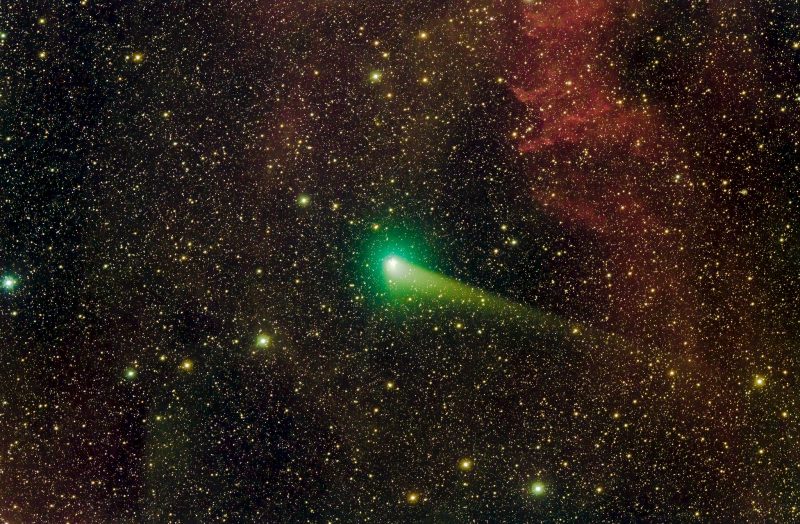
The comet’s backstory
Astronomers first spotted the comet in 2017 using the Pan-STARRS survey instrument in Hawaii. At the time, they said it was the farthest active inbound comet they’d yet seen. It was located between the orbits of Saturn and Uranus when they first saw it.
Comets are mostly rock and ice. They become active when warmed by the sun. However, this comet was already active in 2017. The Hubble Space Telescope took an image of the comet looking like a fuzzy snowball while it was still in the outer solar system. The comet appears to have a large nucleus, and it shows a huge cometary atmosphere or coma.
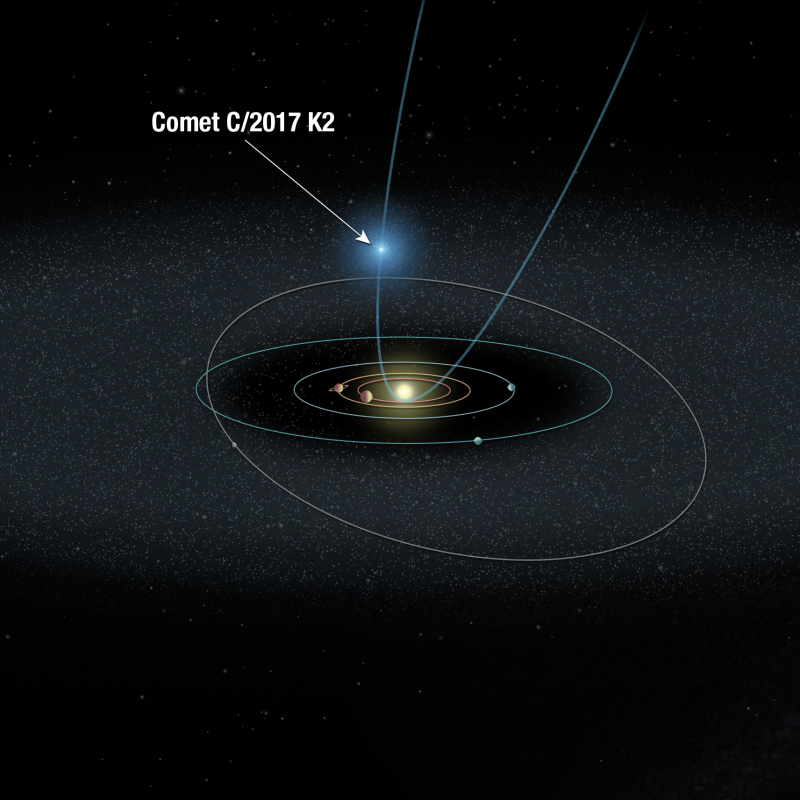
PanSTARRS
If the name Comet PanSTARRS rings a bell, that’s because there are many of them. Pan-STARRS is a sky survey that is particularly good at spotting new asteroids, comets, supernovae and the like. This is Comet C/2017 K2 (PanSTARRS). At its discovery, K2 was 1.49 billion miles (2.4 billion km) from the sun. That’s 16 times farther away than the Earth is from the sun.
And if the name K2 reminds you of the second largest mountain on Earth, also named K2, keep in mind that the mountain is 28,251 feet (8,611 meters) tall. If the comet K2 is around 11 miles or 18 km (a reasonable estimate), that translates to about 58,000 feet or 18,000 meters. In other words, the comet K2 dwarfs the mountain K2, which is about half its size.
By the way, the new title-holder for farthest active comet is Comet Bernardinelli-Bernstein. Astronomers spotted this behemoth comet about 100 times the size of a normal comet. That’s when it was more than 2.7 billion miles (4.4 billion km) from the sun. Comet “Bern-Bern” will have its closest approach on January 21, 2031. But you have nothing to fear from it, as it will be slightly farther away than Saturn’s orbit.
Almost as big as Jupiter
Another indication that suggests C/2017 K2 is large, or at least very active, is that observations showed it developed a cometary atmosphere, or coma, with a diameter of about 81,000 miles (130,000 km). That would mean this comet’s coma is a sphere of gases 10 times the diameter of planet Earth, or almost as big as the diameter of planet Jupiter. That’s huge!
Also, some early observations detected an incredibly large tail, some 500,000 miles (800,000 km) long.
Scientists think that comets that are too far from the sun shouldn’t sublimate huge amounts of ice. So this comet’s activity is probably driven by a mix of ices with substances like nitrogen, carbon dioxide, carbon monoxide and molecular oxygen.
Most comets have a nucleus of about 0.5 to 2 miles (1 to 3 km) in diameter, while others may be up to 10 miles (16 km) wide. However, a few are really huge, including Hale-Bopp (37 miles or 60 km), Bernardinelli-Bernstein (93 miles or 150 km) and 95P/Chiron, also known as 2060 Chiron) at 124 miles or 200 km. In fact, 95P/Chiron may be a dwarf planet. However, it showed cometary behavior and thus got a comet designation.
When will we see the next bright comet?
Comet C/2022 E3 (ZTF) is expected to be as bright as magnitude 5 in January 2023. After that, the next possible good one appears to be comet 12P/Pons-Brooks, which might reach magnitude 5 or 4 in March 2024.
Comet C/2017 K2 images since closest approach to Earth
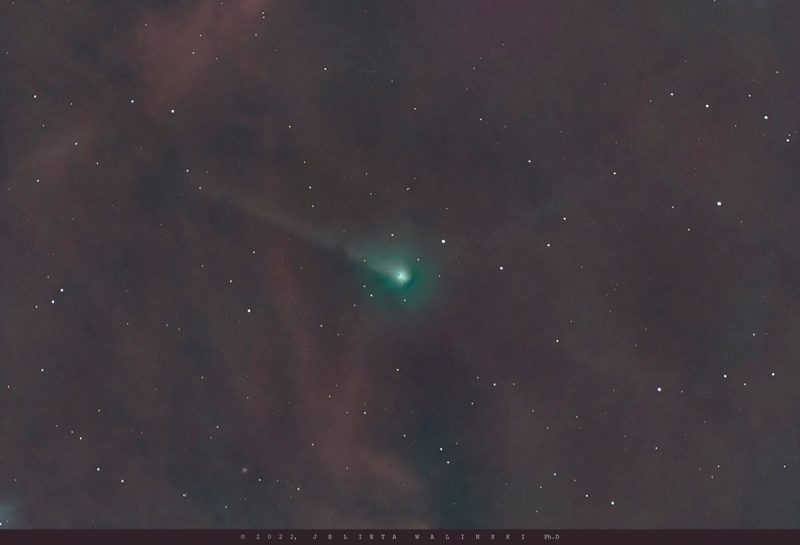
Images of Comet PanSTARRS before closest approach to Earth
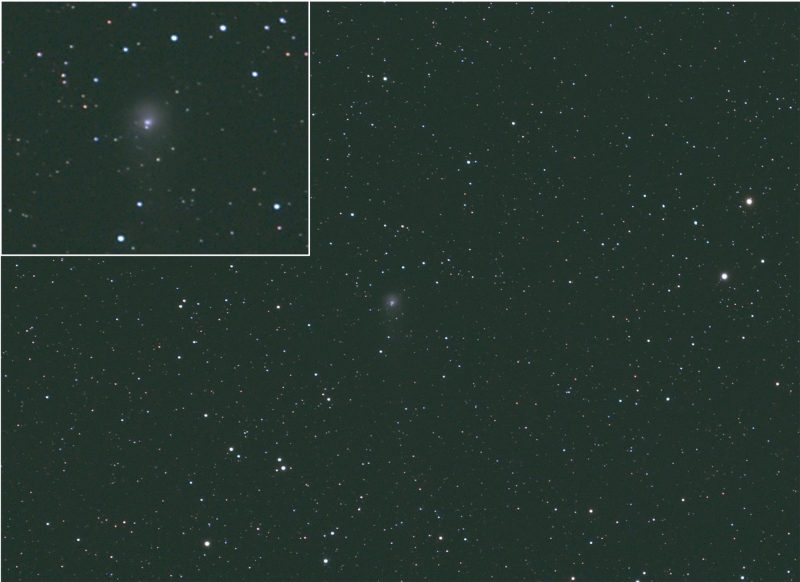
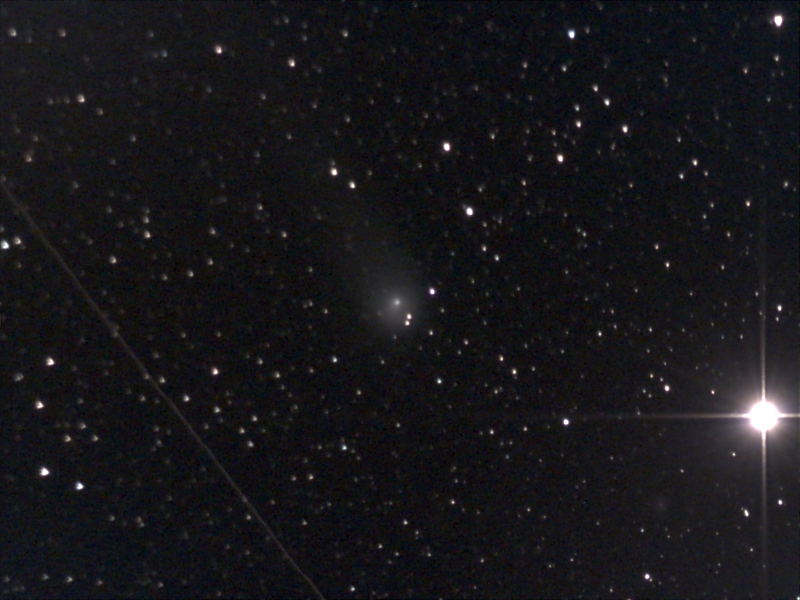
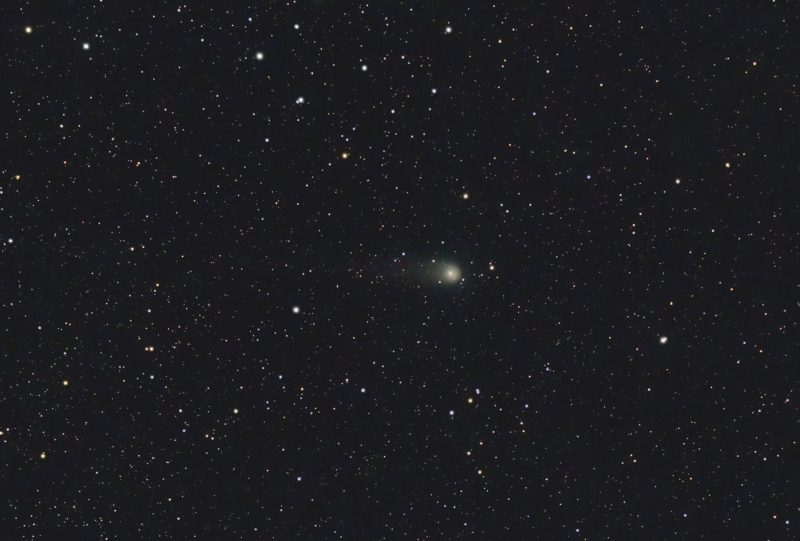
Bottom line: Comet C/2017 K2 (PanSTARRS) reaches its closest point to the sun – perihelion – on December 19, 2022. It’s now a target for southern skies.











